Pindjur (or pinđur), is a traditional Balkan relish made from roasted red peppers, tomatoes, and sometimes eggplant. Our authentic homemade pindjur is perfect as a spread, dip, or condiment. As delicious as ajvar, and much easier to prepare. Shall we?
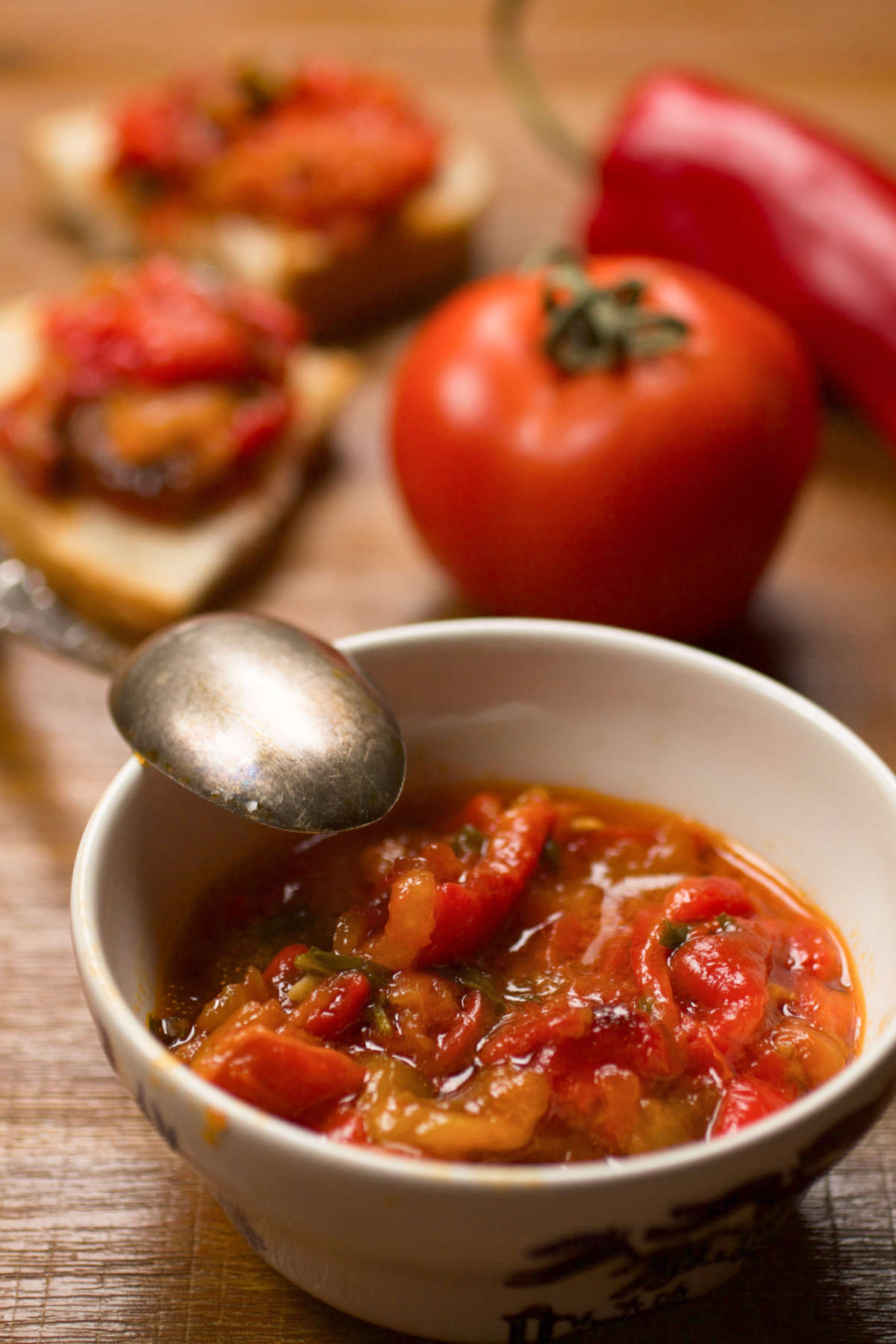
Jump to:
Background
Pindjur or pinđur (pronounced pin-jooh-r), is a relish that originated in North Macedonia. It has since become a staple in kitchens across the Balkan peninsula.
Pindjur belongs to the same family of condiments as ajvar and lutenica. Amazing and delicious, these red pepper-based condiments fall into several categories. Depending on where you eat them, they are either a sauce, relish, dip, spread, salsa, or a salad.
Together, they're considered an important part of 'zimnica,' or food prepared for the winter. Nowadays, however, they're consumed all year long.
Pindjur recipes vary throughout the region. Tomatoes, chunky texture, and shorter preparation sets them apart from their 'condiment cousins.'
Today we're sharing an authentic pindjur recipe the way it's prepared in Bosnia and Herzegovina, Croatia, and Serbia. To turn it into a North Macedonian pindjur, just add eggplant.
Why You'll Love Our Pindjur
- Authentic Flavor. The recipe is coming straight from generations of Balkan cooks.
- Versatile Use. Pindjur is a dip, spread, or salad. You decide what!
- Healthy Ingredients. It consists of fresh peppers, tomatoes, garlic, parsley, and sometimes eggplant.
- Simple to Make Fantastic taste, but way simpler to make than ajvar.
Ingredients
Ready to make pindjur (pinđur)? Here’s what you’ll need.

- Ripe Tomatoes. Roma, plum, beefsteak, or heirloom (look for red ones) work well. Avoid cherry tomatoes and canned tomatoes.
- Red Peppers. Red bull horn peppers, or red bell peppers. Avoid other types.
- Oil. Vegetable, sunflower, avocado, or coconut. Avoid olive oil as it takes over the taste.
- Sugar. Granulated sugar.
- Vinegar. White wine vinegar. Avoid different vinegars like ACV.
- Salt. Table salt.
- Fresh Parsley. Avoid dry parsley.
- Garlic.
- Chili Peppers. A milder type.
- (Optional) Eggplant, Carrots. Many Macedonian pindjur recipes call for the use of eggplant and carrots.
Instructions
Let’s walk through how to make pindjur (pinđur):
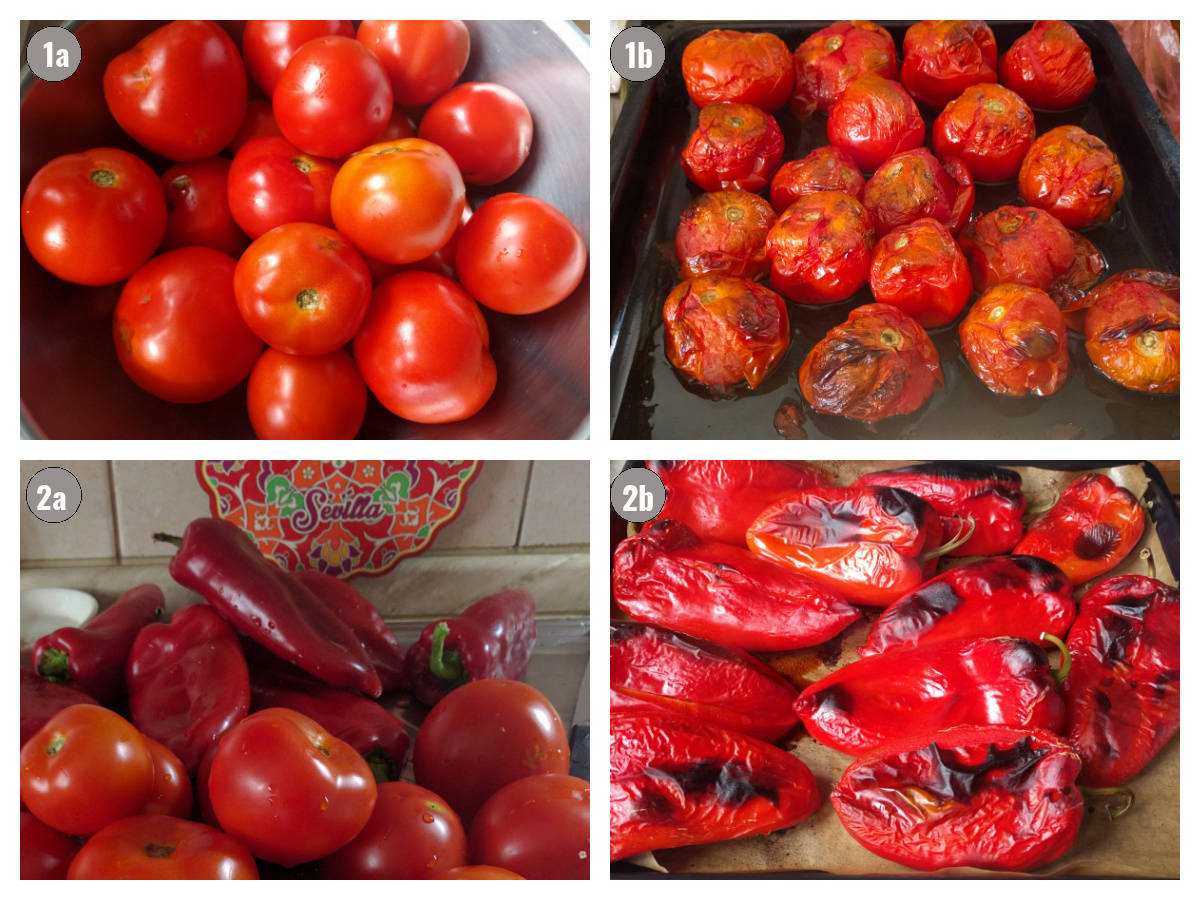
Step 1. Roast Tomatoes. Preheat oven. Wash tomatoes, place on a tray, and roast until skins shrivel. Set aside.
Step 2. Roast Peppers. Wash and roast peppers until blistered. (Flip as needed.) Transfer to a bowl and cover with plastic.

Step 3. Cook Tomatoes. Peel tomatoes. Transfer to a pot, smash and cook. Add sugar, vinegar, and salt. Cook for one hour, stirring frequently.
Step 4. Prepare Peppers. Peel, de-seed, and cut peppers.
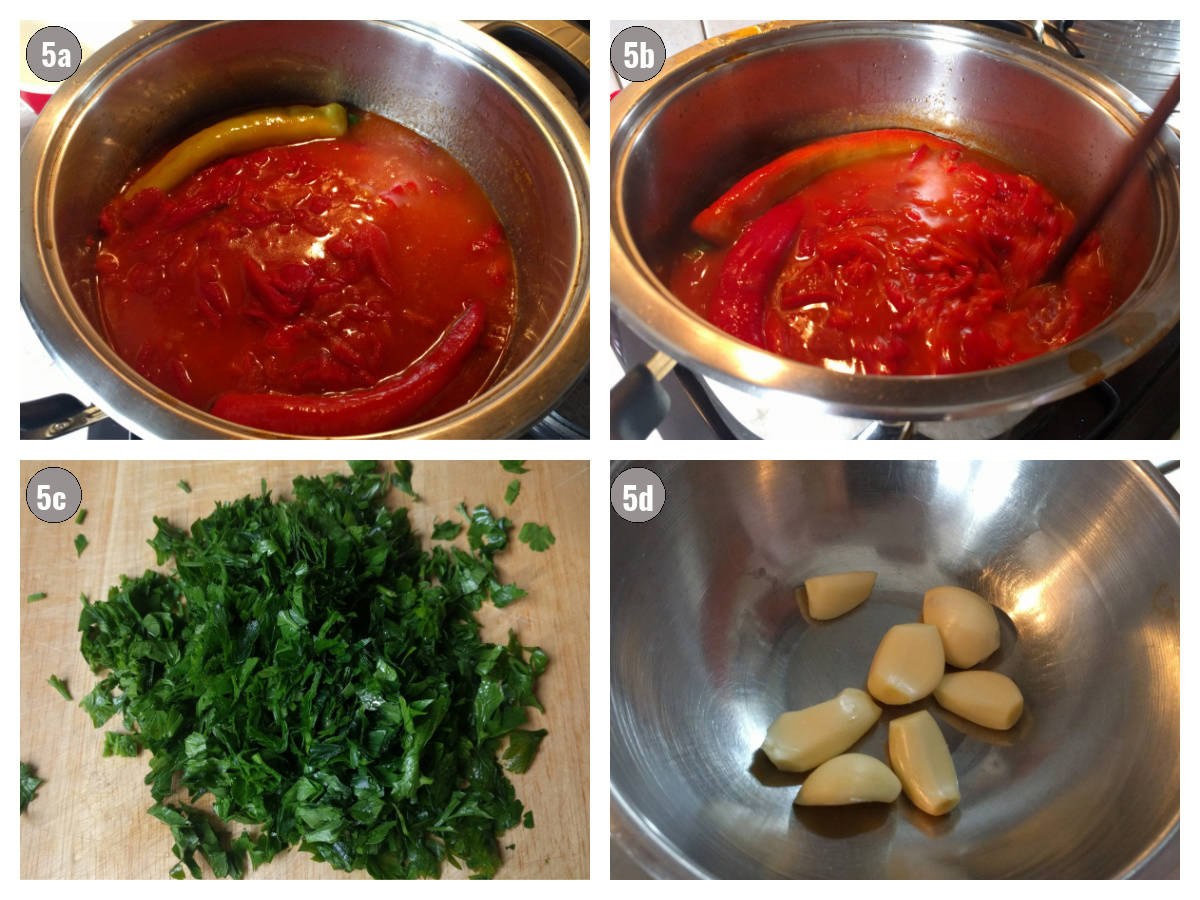
Step 5. Add Peppers to Pindjur (Pinđur). Add peppers to pindjur (pinđur). Mix well, continue cooking for 45 minutes, and stir frequently.
Step 6. Sterilize jars. (Not pictured.) Heat the oven. Place clean jars on a tray. Heat for 15-20 minutes.
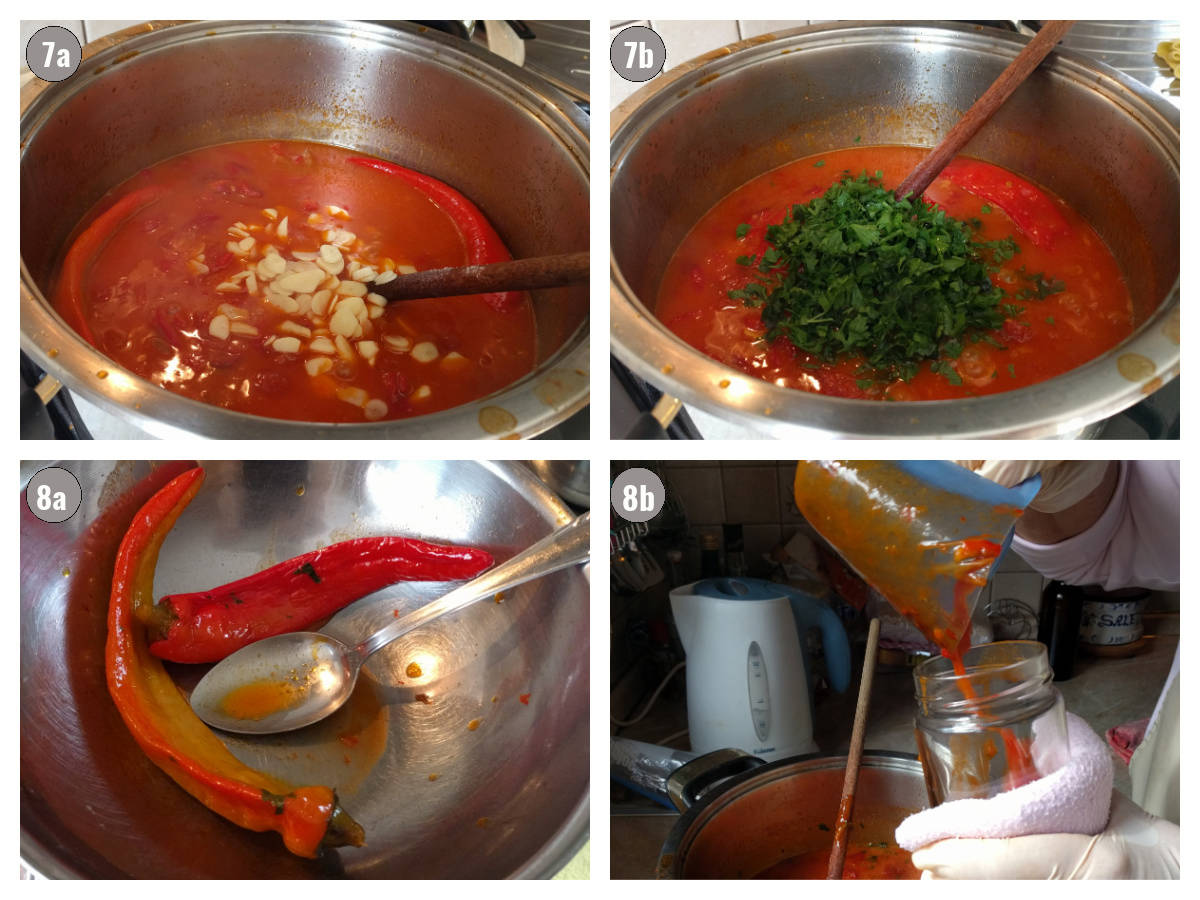
Step 7. Add Aromatics. Stir in chopped parsley, garlic and chili peppers. Cook for 15 minutes more. Take out chili peppers.
Step 8. Transfer to Jars. Pour pindjur (pinđur) to jars. Cool down. Transfer to a cool and dark place.
Handling
Pindjur (pinđur), and other winter foods, are stored and handled a little bit differently.
Cooling. Before storing pindjur, make sure it's completely cooled down.
Store. Keep pindjur jars in a cool, dark place like a cool pantry, garage, or basement. Properly stored pindjur (pinđur) lasts several months. Once you open a jar, refrigerate it, and consume it within a week.
Serve. Serve with homemade bread like Bosnian tepsijaš, fried dough balls uštipci, crescents, meza, as a salad, dip, relish, or a spread.
Freeze. No. Read the FAQs to find out why.
Variations
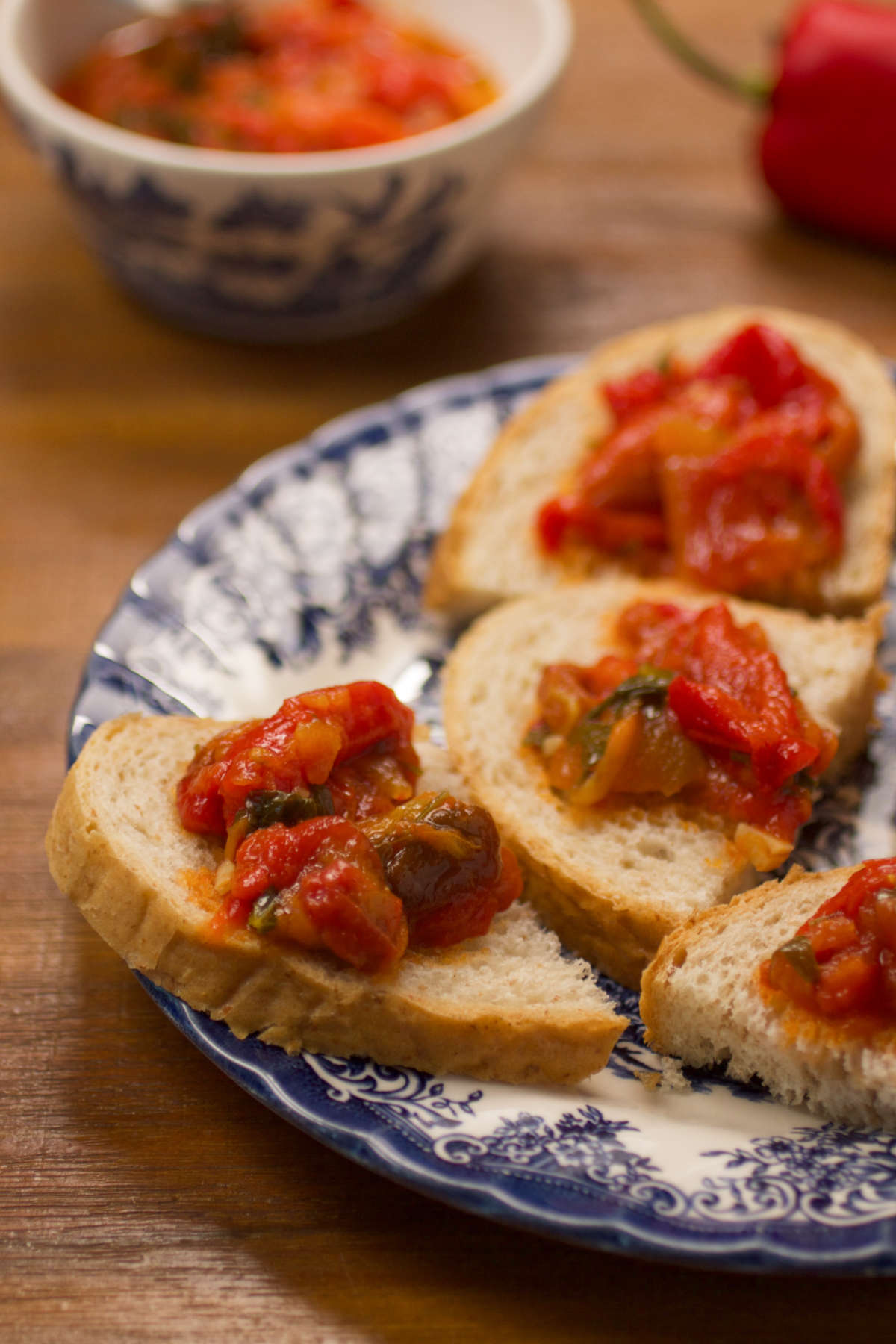
Here are a few pindjur variations you may find helpful.
- Macedonian. To make this recipe into a Macedonian pindjur (pinđur), simply add eggplants to the mix. Bake them at the beginning, peel and add after tomatoes. Carrots are also welcome.
- Spicier. To increase the heat, add a couple of more chilis to the mix, and keep them. Keep in mind, your pindjur just transformed into lutenica, aka 'hot' or 'angry' relish.
- Faster. If you want a faster pindjur (pinđur) skip the roasting. However, the taste will suffer.
Recipe FAQs
Pindjur comes from North Macedonia.
In addition to Macedonia, it's prepared, and consumed all over ex-Yugoslav countries, especially Bosnia, Croatia, and Serbia.
Yes and no. To make this recipe into a Macedonian pijdur, just add eggplant.
The recipe we shared here is for pindjur as it's usually made in Bosnia and Herzegovina, Croatia, and Serbia.
Macedonian pindjur (pinđur) almost always has eggplant, and sometimes carrots too.
Pindjur is chunkier, there are tomatoes, and it's cooked for a shorter period of time.
It tastes fantastic, just like ajvar. However, the texture makes pindjur more of a relish or a salad, as opposed to a spread.
While most people prefer ajvar, its preparation is long and taxing.
No.
Pindjur is a type of food prepared for winter, called zimnica. Zimnica includes preserved and fermented foods, condiments, jams, sauces, and similar. Traditionally, these foods were prepared late in the fall to last the entire winter.
Although it's now made year-round, if kept in a cool and dark place, pindjur can last up to several months. There is no need to freeze it.

Thoughts?
If you make today’s pindjur and love it, please consider leaving a ⭐️⭐️⭐️⭐️⭐️ (5-star) rating—it helps others find the recipe more easily!
You can also leave a comment; I read every single one! And if Instagram is more your thing, tag us @balkanlunchbox—we’d love to see your creations.
Prijatno, Dobar Tek, and Bon Appétit!
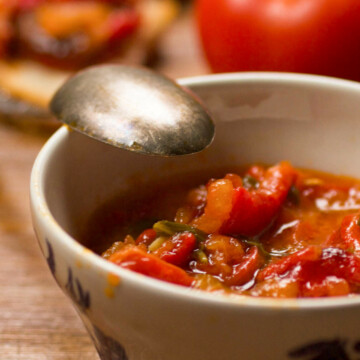
Pindjur (Pinđur) - Balkan Tomato and Red Pepper Spread
Equipment
- a pair of latex gloves
- 1-2 baking sheets covered with foil
- 1 Large pot
- several smaller glass jars
- a pair of mittens or thick kitchen towels
Ingredients
- 11 pounds ripe tomatoes
- 11 pounds red bull horn's peppers or red bell peppers
- 3.5 cups oil vegetable, sunflower, avocado or coconut
- 1 cup sugar (about 7 oz)
- 1.75 cups white wine vinegar (about 13.5oz)
- 2 tablespoons salt
- 2 batches fresh parsley
- 14-15 garlic cloves
- (Optional) 1-2 chili peppers
- (Optional) 4 lbs (2kg) eggplant
- (Optional) 1 lb (.5kg) carrot
Instructions
- Roast the Tomatoes. Heat oven to 400°F (200°C). Wash tomatoes and place them on a baking sheet lined with foil. Roast for 20-30 minutes, or until tomato skins shrivel. Remove them from the oven and let them cool down. Increase oven temperature to 480°F (250°C).
- Roast the Peppers. Wash peppers (except chilis), and place them on a baking sheet lined with foil. (You may need to bake them in two batches, or on two oven levels. Alternatively, roast them the day before.)Roast for about 25 minutes on one side, then turn them over and roast for another 20-25 minutes, checking frequently to ensure even roasting. Once the skins are blistering, transfer them to a bowl, and cover it with a plastic bag or saran wrap.
- Prep and Cook the Tomatoes. (Parallel to peppers roasting.) Carefully skin roasted tomatoes, and transfer them to a large pot. Keep all the juices. They should fill up no more than ½, preferably ⅓, of the pot volume. Crush and squash tomatoes using a potato masher. Bring to a boil on medium, and stir frequently. Then lower the temperature, and let it boil on low for several minutes, or until the tomato juice thickens. Add oil, sugar, and vinegar and stir well. Raise the temperature to medium again, and simmer for one full hour (60 minutes), stirring frequently.
- Prepare the Peppers. (Parallel to the tomatoes cooking.) Protect your working area with a plastic cover or similar. Prepare two large bowls. One with water, and another empty one. Put the gloves on.Take one pepper and remove its stem and skin. Discard them. Scrape all seeds with a knife and discard them as well. If there are any burn spots (black spots) on the pepper, also scrape them off and discard them. Dip the pepper in the bowl with water quickly to take off any additional debris. Finally, transfer it to the empty bowl. Keep all the juices as well. Repeat the process for all peppers.Cut all peppers into ½ inch (1 centimeter) strips lengthwise. Proceed to cut pepper strips into 2-3 pieces each.
- Add Peppers to Pindjur. By this time, tomatoes should have been cooking for an hour. Add the pepper strips, chilis, and salt to the pot with tomatoes. Stir well. Raise the temperature to medium and cook everything for another 45 minutes. Stir frequently and thoroughly.Slice garlic and mince parsley as pindjur is cooking.
- Sterilize the Jars. About 30 minutes into the previous step, heat the oven to 200°F (90°C). Wash your jars with water and detergent, rinsing well. Line them up in a deep pan, and place the pan in the oven for 15-20 minutes. This will sterilize them. When done, transfer the pan with hot, sterilized jars to a working area carefully. Avoid touching.
- Add Aromatics. Peel and slice garlic. Wash and mince parsley. Add them to the pot and stir.
- Jar the Pindjur. When the time is up, turn the stove off. (Use mittens when handling jars, and be careful to avoid burning your hands.)Take out chili peppers and discard them. Transfer the pot with pindjur to your working area carefully. Using a ladle, transfer hot pindjur into hot jars. Fill each jar up to the top. Keep pushing the pindjur down in the jar with a spoon so packs well. There should be no air pockets in pindjur, as this will cause it to spoil faster. Fill the jars up to the top. Close the lids tightly, then flip each jar, so they're 'standing' on the lids. Let pindjur cool down completely. Then transfer jars to a cool and dark place.
- Cool. Before storing pindjur, make sure it's completely cooled down. Store. Keep pindjur jars in a cool, dark place like a cool pantry, garage, or basement. When stored properly, pindjur lasts several months. Once you open a jar, refrigerate it, and consume it within a week. Serve. Serve with homemade bread like Bosnian tepsijaš, fried dough balls uštipci, crescents, meza, as a salad, dip, relish, or a spread. Freeze. No. Read the FAQs to find out why.
Video
Notes
- Cooking Time
- Nutrition Information and Serving Size

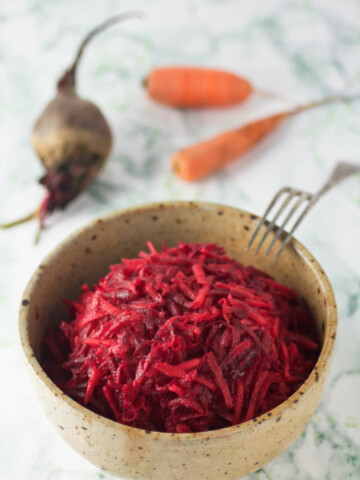
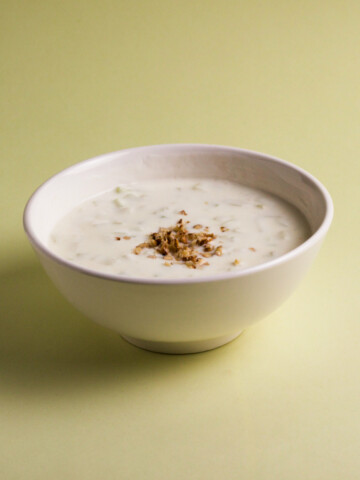
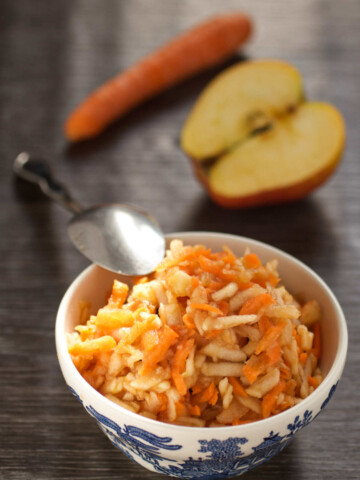
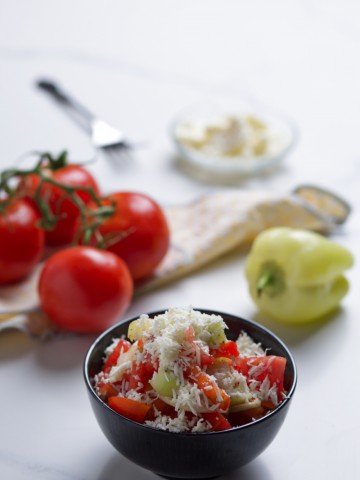
Jessica says
Hi Aida, FYI, when I click on the Print button by the recipe, I get a page full of nonsense symbols (question marks, random letters, and so on). Not sure if it's just my computer or if others are seeing that as well.
Other than that, though, the recipe looks delicious!
Aida says
Hi Jessica,
Thanks for letting me know! What browser are you using? Try doing it from Chrome as it's working fine there. Meanwhile I'll get in touch with my web designer about the other browsers.
Aida
Jessica says
Hi Aida,
I'm using Firefox 49.0.1. I'll try Chrome, though.
Thank you,
Jessica
Aida says
Jessica,
Firefox is now fixed. Let me know if it works for you.
Aida
Jessica says
Hi Aida,
Firefox still gives me a page full of "j#m??K?K???:=" I wonder if one of the extensions I'm using is interfering. I don't use many, but you never know. Well, I can still see the recipe online. 🙂
Thanks,
Jessica
Jessica says
(Oh, and the print function does work on Chrome, as you mentioned, so there's that, too.)
Aida says
My web designer will continue working on it. Until then there is always Chrome. Thanks again for taking the time to let me know about this.
Bridget says
You are my HERO! My husband and I went to Istanbul a few years ago. We ate this spread at breakfast, lunch and dinner. It was so good. We couldn't get enough. I have been trying to figure out what it was called and find a recipe ever since then. Thank you. I can't wait to try this!
Aida says
Bridget, thanks for visiting the blog! Glad I could help.
You may have eaten pindjur or ajvar... If it was more chunky and tomato-ey it was probably pindjur. If it was more smooth, then it was ajvar (https://balkanlunchbox.com/the-ultimate-guide-ajvar-balkan-roasted-red-pepper-eggplant-relish-spread-chutney/).
If you make it, let me know how it turns out. I hope you guys visit some more fun places soon.
Ax
Steve Wilder says
Dear Aida,
Loved this story and recipe, being a huge fan of pindjur. By the way, an old friend from Novi Beograd claimed that it's also called summer ajvar!
Greetings from Beč,
Steve
Aida says
Hi Steve,
Thank you. Did not know that about pindjur, I love learning different regional dish names. I miss Beč!
Mira says
Do you weigh the peppers for the recipe before or after roasting them?
Aida says
Before
Kristen says
My husband is macedonian, and had asked me for 6 years to make pindjur! Thanks to you, I finally made it and now I will be able to pass your recipe down to my daughter's. Thanks heaps!
Aida says
Anytime Kristen! Let me know if there are any other recipes you'd like and we'll put them in rotation.
Kristijana says
Hi, I wonder when the oil is added into the mixture? Did I miss something in the description? Thanks!
Aida says
Kristijana,
Thanks for catching that! You put the oil in together with the sugar and vinegar (see the video below). I'll update the directions as well.
Best,
Aida
Kristijana says
Thanks! I totally overlooked there was a video too! 🙂
Aida says
👍☺️
Mo says
Thank you so much for publishing this recipe and for the wonderful narrative story around it. It’s been about 30 years since I’ve been living in Skopje and I miss the taste of pindjur. Looking forward to making this recipe. Question I have: I remember the houses with peppers strung up accross them in the area outside of town; had thought they were drying in the sun. Is pindjur ever made with dried peppers? What recipe might those be for?
Thank you!
Aida says
Hi Mo!
Welcome to the blog!
Pindjur is made with fresh peppers.
Peppers you remember strung up to dry are used in the winter. It's a way of dehydrating and preserving them for use in dishes during the long winter months. Some of these dried ones are also used to make the paprika seasoning.
You may enjoy our ajvar recipe as well: https://tinyurl.com/zrcudeym.
Kind regards!